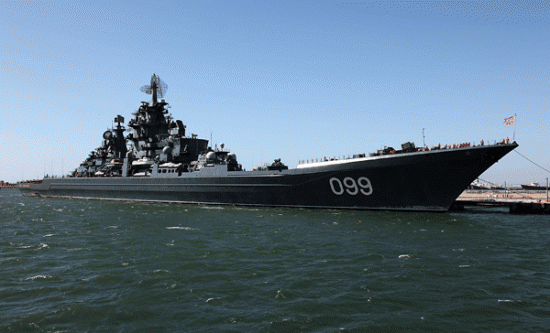What should be the fleet of Russia?
In addition, the rest of the 1144 project ships will be repaired with modernization - this decision, according to available information, was made at the Russian Ministry of Defense.
The possible return to service of the 1144 missile cruiser grouping is one of the most discussed naval themes: experts and amateurs break their spears in disputes about how these ships meet today's requirements of the Russian Navy.
Admiral Gorshkov's favorite project
“Only Sergey Georgievich can afford such an expensive toy,” with this phrase Vladimir Chelomei, chief designer of the Granit missile system, the main armament of new cruisers, almost ruined relations with the USSR Navy Commander Sergey Gorshkov.
The designer was right about something: the huge and very expensive ships designed to solve one single task — the destruction of the aircraft carriers of a potential enemy, seemed anachronistic at a time when the whole world was moving towards universalization, which allowed warships to solve many different tasks with using a variety of missile weapons in universal launchers.
Of course, the ships of the 1144 project carried not only anti-ship missiles intended for the destruction of large enemy surface ships. They received a powerful air defense, and very impressive anti-submarine capabilities, but all of these tools were auxiliary - and the shock weapon the ship, its main missile system, was very highly specialized.
Such narrow specialization predetermined the fate of these ships in the conditions of total lack of money: by the end of the 90 of the last century, only the last one - Peter the Great, completed by political decision for the 300 anniversary of the Russian Navy, remained in the ranks. The first three ships froze at the factory "walls".
What to do with the "white elephants"?
In the British Royal navy there is a wonderful expression "white elephants", which designates warships of non-standard projects, the purpose and application of which are not clear even to specialists. It was in the position of the “white elephants” that the project 1144 cruisers in the post-Soviet Russian Navy were. Tracking the U.S. aircraft carriers could no longer be a real task - even assuming a war between Russia and the U.S., missile cruisers without support became just very large targets, and they did not have to wait for support in the context of the degradation of all key elements of the military structure of the state.
In the second half of the 2000s, money began to appear at the Armed Forces, and at the same time it was a question of returning the cruisers standing "at the wall". Naturally, a question was immediately asked about the tasks that they would have to perform in the fleet.
By this time, opportunities for such a modernization of the Russian industry had already appeared: universal ship shooting complexes were created that significantly increased the range of weapons that a ship can be equipped with, depending on the specific task. The combat information and control systems of a new generation appeared, allowing to build a system of collective defense of the formation: exchange information in real time and control the fire of several ships from one command post.
These innovations, which are being implemented on ships of new projects currently being built by order of the Navy, have become a chance for cruisers.
Moreover, upgraded with the installation of new firing systems and electronic equipment, the 1144 cruisers will acquire a fundamentally different quality: their dimensions make it possible to equip these ships with a large amount of weapons, making them truly versatile platforms combining powerful and diverse attack weapons, anti-aircraft systems and anti-submarine defense.
New structure for new cruisers
At present, the surface fleet of the Russian Navy is moving "from simple to complex" - the corvettes and frigates under construction are planned to be added in the coming decade with larger units, destroyers and universal landing ships. Unified equipment and armament ships will allow you to create efficient connections, the maintenance of which will not be ruinous for the budget due to the use of a large number of standardized components for repair and maintenance of ships of different projects.
This structure, which in itself is capable of solving a wide range of tasks, both in peacetime and in wartime, can be easily strengthened by introducing additional elements, which can be upgraded missile cruisers, and, if a corresponding political decision is taken - aircraft carriers the buildings. Moreover, the presence of combat-ready light forces is a prerequisite for the commissioning of new heavy ships: in its current state, the Russian Navy will not be able to use either universal landing ships, or missile cruisers, or aircraft carriers. The heavy combat units, deprived of escort, are doomed to "stand at the wall", occasionally going out to sea, when it is possible to assemble a combat-ready detachment of ships "from the pine forest", or simply alone - for representative purposes.
This is exactly how the aircraft-carrying cruiser Admiral Kuznetsov and the only heavy nuclear-powered missile cruiser Peter the Great in service are used today. It is hoped that the modernization of the remaining cruisers of the Ministry of Defense is not going to use them in this way.

Information